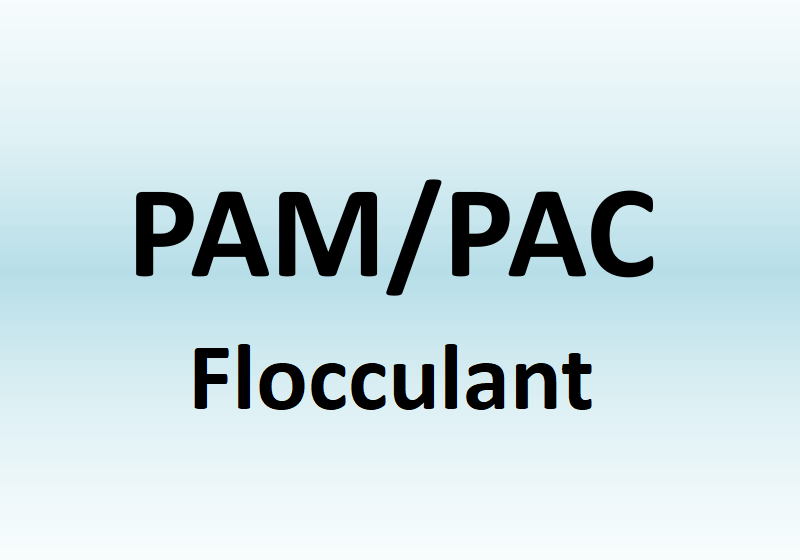Factors Affecting the Use of Flocculant
As a means of strengthening solid-liquid separation in the field of waste water and sewage water treatment, flocculants can be used to strengthen the primary sedimentation, flotation treatment and secondary sedimentation after activated sludge process of sewage, as well as tertiary treatment or advanced treatment of sewage. When used for conditioning before dewatering of excess sludge, flocculant and coagulant aid become sludge conditioner or dehydrating agent.
The Factors Affecting the Use of Flocculants
1.Water PH Value
The pH value of waste water and sewage water has a great influence on the use effect of inorganic flocculants, and the pH value is related to the type, dosage and coagulation sedimentation effect of flocculants selected. H+and OH - in water participate in the hydrolysis reaction of flocculant. Therefore, pH value strongly affects the hydrolysis rate of flocculant, the existing form and performance of hydrolysis products.
Taking the aluminum salt that coagulates by generating Al (OH) 3 charged colloid as an example: when the pH value is less than 4, Al3+can not be largely hydrolyzed to Al (OH) 3, mainly in the form of Al3+ions, and the coagulation effect is extremely poor.
When the pH value is between 6.5 and 7.5, Al3+is hydrolyzed and polymerized into Al (OH) 3 neutral colloid with high degree of polymerization, and the coagulation effect is good.
When pH value is greater than 8, Al3+is hydrolyzed to AlO2 -, and the coagulation effect becomes very poor.
The alkalinity of water has a buffer effect on the pH value. When the alkalinity is not enough, lime and other agents should be added to supplement. When the pH value of water is high, add acid to adjust the pH value to neutral. In contrast, polymer flocculants are less affected by pH value.
2.Water Temperature
Waste water and sewage water temperature affects the hydrolysis rate of flocculant and the formation rate and structure of alum floc. The hydrolysis of coagulation is mostly endothermic reaction. When the water temperature is low, the hydrolysis speed is slow and incomplete.
At low temperature, the viscosity of water is large, Brownian motion is weakened, the number of collisions between flocculant colloidal particles and impurities in water is reduced, and the shear force of water is increased, which hinders the mutual adhesion of coagulation flocs; Therefore, although the dosage of flocculant is increased, the formation of flocs is still slow, and the structure is loose, the particles are small and difficult to remove.
Low temperature has little effect on polymer flocculant. However, it should be noted that when using organic polymer flocculants, the water temperature should not be too high, and the high temperature will easily cause the organic polymer flocculants to age or even decompose into insoluble substances, thus reducing the coagulation effect.
3.Water Impurities
The uneven size of impurity particles in waste water and sewage water is beneficial to coagulation, and the small and uniform size will lead to poor coagulation effect.
Too low concentration of impurity particles is often bad for coagulation. At this time, reflux sediment or adding coagulant aids can improve the coagulation effect.
When the impurity particles in the water contain a large amount of organic matter, the coagulation effect will become worse. It is necessary to increase the dosage or add oxidants and other coagulant aids.
Calcium and magnesium ions, sulphides and phosphides in water are generally beneficial to coagulation, while some anions and surface active substances have adverse effects on coagulation.
4.Type of Flocculant
The selection of flocculant mainly depends on the properties and concentration of colloid and suspended solids in waste water and sewage water .
If the pollutants in the water are mainly colloidal, inorganic flocculants should be preferred to destabilize and coagulate. If the flocs are small, macromolecular flocculants should be added or activated silica gel and other coagulants should be used together.
In many cases, the combination of inorganic flocculants and polymer flocculants can significantly improve the coagulation effect and expand the scope of application. For polymers, the greater the amount of charge on the chain molecule, the higher the charge density, the more fully the chain can stretch, the larger the scope of action of adsorption bridging, and the better the coagulation effect.
5.Flocculant Dosage
When using coagulation method to treat any wastewater and sewage water , there are optimal flocculants and optimal dosage, which are usually determined through tests. Excessive dosage may cause the colloid to be stabilized again.
Generally, the dosage range of ordinary iron salt and aluminum salt is 10~100mg/L, the dosage of polymer salt is 1/2~1/3 of that of ordinary salt, and the dosage range of organic polymer flocculant is 1~5mg/L.
6.Flocculant Dosing Sequence
When multiple flocculants are used, the best dosing sequence needs to be determined through tests.
Generally speaking, when inorganic flocculant and organic flocculant are used together, inorganic flocculant shall be added first, and then organic flocculant shall be added.
The particle size of treated impurities is 50 μ When m is above, the organic flocculant is usually added first to adsorb the bridge, and then the inorganic flocculant is added to compress the double electric layer to destabilize the colloid.
7.Hydraulic Conditions
In the mixing stage, the flocculant and water are required to be mixed quickly and evenly. In the reaction stage, it is necessary to create sufficient collision opportunities and good adsorption conditions to allow the flocs to have sufficient growth opportunities, and prevent the generated small flocs from being broken. Therefore, the mixing strength should be gradually reduced and the reaction time should be long enough.
#QDEVU #WATERTREATMENT #WASTEWATERTREATMENT #SEWAGETREATMENT



